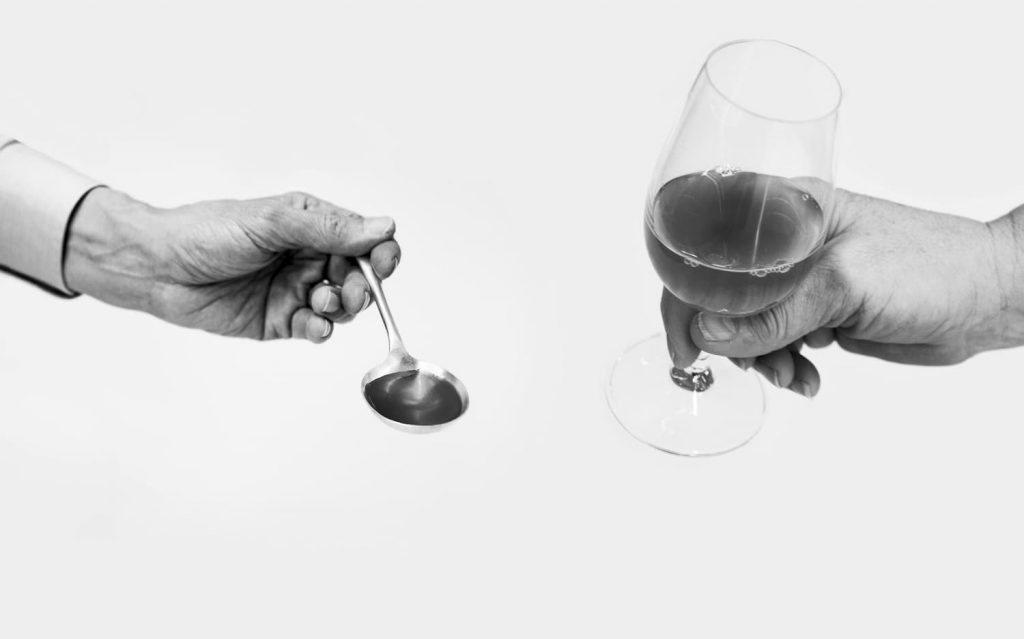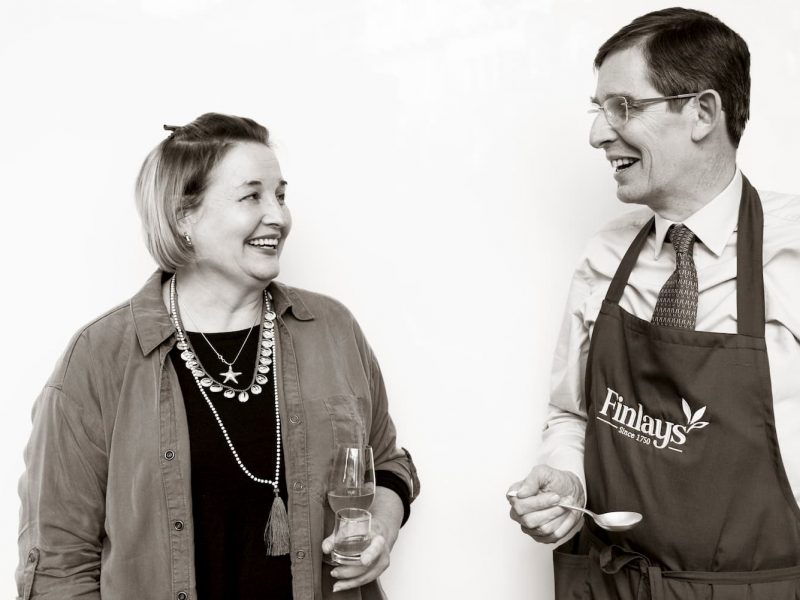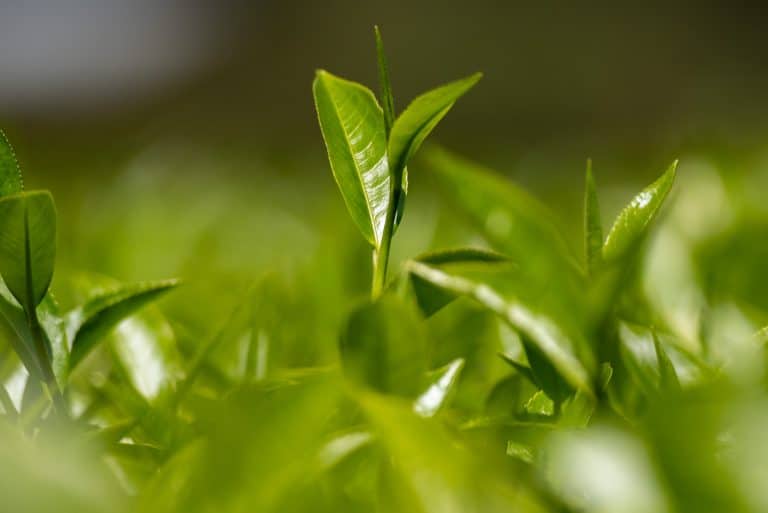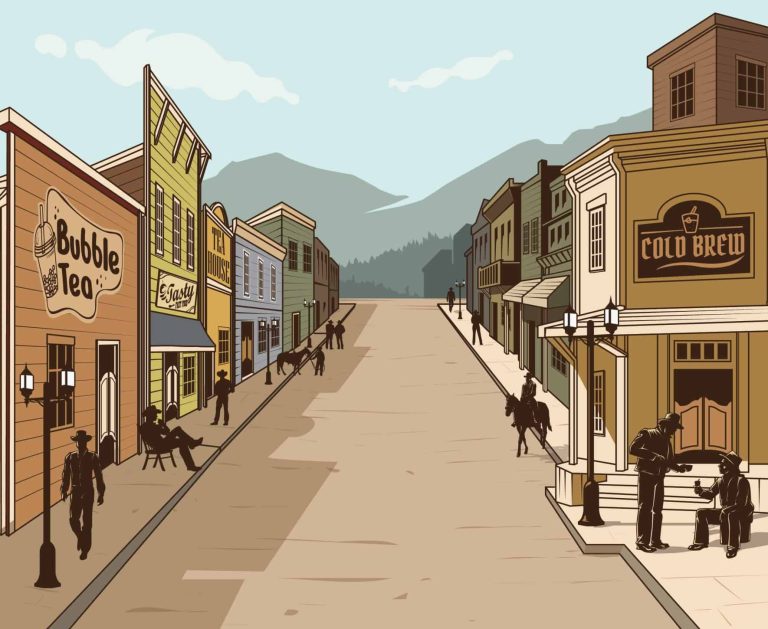Images: Giulio Mazzarini
At Finlays, helping our customers create products with exceptional flavour is our raison d’être. But what exactly do we mean by the concept of “flavour”? Is it simply how something tastes, or a more rounded sensory experience? Can we measure flavour, and if so, is the best way to do that using our instincts, our sensory expertise, or is a more scientific approach called for?
To guide us through this fascinating area, we sat down with two Finlays experts, who have unique perspectives on the nature of flavour.
Tell us about your role.
Mark Peters: I taste and assess tea from across the world to gauge its quality. I spend most of my time in the tea tasting area in London, and wherever else I’m needed in the world of tea.
Frieda Dehrmann: My role is about creating the technical links between the chemistry and the emotions of the products we consume. I’m more desk-based than Mark, and in laboratories in regional manufacturing areas.
How would you define flavour?
MP: Flavour has a specific meaning in the context of tea, referring to a characteristic of high-grown tea where the flavour is allowed to develop. How someone experiences the taste of tea is, for me, defined by its body, strength and brightness. Flavour is an occasional bonus.
FD: In simple terms, for me flavour is the confluence of the three dominant senses of smell, taste and touch.
Is flavour more quantifiable, or qualifiable?
MP: For me how something tastes is qualitative. I have an expectation of what a tea should taste like ahead of time, so I’m looking for divergence from that. It’s something I experience instinctively. When I started out 38 years ago, I was told it would take seven years before I’d be useful. While anyone could in theory become a tea taster, doing so means tasting tea all day every day and being repeatedly exposed to all types of tea from all origins, from all different seasons. After all these years, it’s become second nature.
FD: The concept of flavour is a quantifiable characteristic. Certain molecules give you certain presentations of aroma and taste, so if you train yourself with these molecules, you can quantifiably measure how much is there. Having a molecular understanding of a product is extremely valuable from our customers’ point of view. Based on empirical data, we can offer provable consistency time and again. Not only that, we can quantifiably demonstrate that a product has certain desirable characteristics and how best to take advantage of these when it comes to applications.
What is the physiological process of experiencing flavour?
FD: It’s a hugely complex science. Humans evolved to experience flavour subconsciously, but we do so using every sense. Sight and smell are huge factors in how we perceive flavour, as is touch, even sound. Even if we don’t realise it.
MP: I’d agree with Frieda. When I taste tea, I do it instinctively, but my subconscious mind is computing those same factors without identifying them individually.
How much about the flavour of a tea could you discern without actually tasting it?
MP: A huge amount. First I would look at the dry leaf, the colour and the brightness of the liquor, as well as the hue of the infusion. If it looks appealing, chances are it will taste appealing. I may also smell the infusion if I was looking for defects or positive attributes. I could also tell its origin, age and freshness.
FD: Using chemical analysis, I could give you an indication of its likely flavour characteristics based on the molecules it contained, as well as analysing things like pH level and its colour. I could probably also tell its continental origin and I could tell you how it had been processed in terms of being dried, heated etc. Where I can really add value is that, based on its empirical characteristics, I could tell you how the product might fit into the market in terms of location, demographics and application.
How do your different perspectives marry together?
MP: We work together a lot and when we do, we come to a collective judgement. The science and the tasting are interwoven.
FD: Mark brings a deep and enduring knowledge of origin, quality, market value. What a scientific approach brings is a deconstructed understanding of a product on a molecular level. The convergence of looking at things from different perspectives is hugely powerful. Mark’s checking the tea is as it should be, measured against his expectation, and I’m focussed on how that tea can ultimately be used in practice.

Where do you see the future of tea tasting going?
FD: There’s huge potential for development. Artificial Intelligence is the holy grail for sensory scientists and the product development opportunities would be phenomenal. But there are huge challenges to that happening any time soon. We are involved in some projects that will deepen our understanding of the flavour and how we can help brand owners unlock its potential. For example, working with the Breeding Team, led by Richard Mosi in Kenya, and using things like proteomics and metabolomics, we can start to stack vast amounts of data, turning it into knowledge and then invaluable insights for our customers.
MP: From the tea-tasting side, technology’s been around for a while. We used to have a tea tasting machine – an e-tongue – but it was incredibly slow, you had to clean it, and ultimately it didn’t add value.
FD: If you were to watch Mark at work, you’d quickly see that nothing works as fast and effectively as a human when it comes to assessing tea.
So in your view, is flavour more of an art or a science?
MP: For me, while taste is important, I’d say science plays the biggest role as intrinsically flavour is related to terroir, soil type, plant variety and climatic conditions.
FD: I’d say it’s both. Analysing flavour is strongly founded in science. But the art and creativity are in how you express that science, to make it impactful to customers and consumers. You can’t have one without the other.





